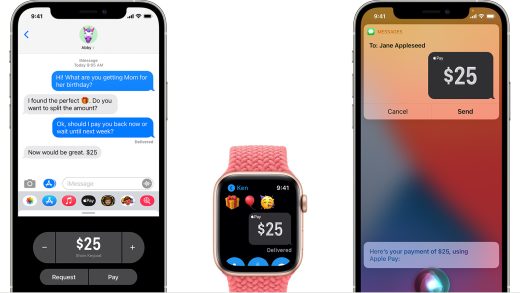Are you unsure about how to properly swipe a card for payment? Don’t worry, we’ve got you covered!
In this article, we will guide you through the process of swiping a card smoothly and efficiently. From understanding card readers to dealing with error messages, we’ll provide you with all the necessary information.
So, grab your card and let’s get started on mastering the art of card payment!
Understanding Card Readers
You should familiarize yourself with how card readers work.
When making a payment with your card, it’s important to understand how the card reader functions. The card reader is a device that reads the information stored on your card’s magnetic stripe or chip.
To use it, simply insert your card into the designated slot or swipe it through the reader. The card reader will then communicate with the payment network to verify your card details and process the transaction.
It’s crucial to ensure that the card is inserted or swiped correctly to avoid any errors. Additionally, be cautious of any suspicious card readers that may be tampered with, as they can potentially steal your card information.
Gathering the Necessary Information
To successfully swipe a card, you need to gather the necessary information. This includes the required card details such as the card number, expiration date, and CVV code.
It’s important to ensure the accuracy of this information as any mistakes can lead to payment issues or declined transactions.
Required Card Details
When making a card payment, begin by gathering the necessary information. The required card details usually include the card number, expiration date, and CVV code. You can find the card number on the front of the card, typically a 16-digit sequence. The expiration date is usually located next to the card number and consists of the month and year the card will expire. The CVV code, also known as the card verification value, is a three-digit number found on the back of the card.
In addition to these details, some card payments may require the cardholder’s name and billing address. It’s important to have all these details ready before proceeding with the card payment to ensure a smooth and successful transaction.
Importance of Accuracy
Ensure that you gather the necessary information with accuracy and precision when making a card payment. It’s crucial to provide the correct card details, including the cardholder’s name, card number, expiration date, and CVV code. Any inaccuracies or mistakes in these details can lead to payment errors or declined transactions. Double-check the information before proceeding with the payment to avoid any unnecessary complications.
Additionally, ensure that you have the correct billing address and contact information associated with the card. This information is essential in case of any discrepancies or issues with the transaction.
Positioning the Card Correctly
Place the card firmly against the card reader before swiping it. This is an important step to ensure a successful transaction. Make sure the card’s magnetic strip is facing towards the reader and the chip, if there’s one, is inserted correctly.
Positioning the card correctly is crucial as any misalignment or partial insertion may result in a failed transaction or an error message. Take a moment to ensure that the card is securely placed against the reader, making full contact.
Avoid swiping the card too quickly or at an angle, as this can cause the reader to have difficulty reading the information. By following these instructions and positioning the card correctly, you can ensure a smooth and hassle-free payment experience.
Swiping the Card Smoothly
Now that you have positioned the card correctly, it’s time to focus on swiping it smoothly.
The key to a successful swipe is to insert the card into the reader in a steady and controlled motion, ensuring that it goes all the way through. By doing so, you can avoid any potential errors that may occur if the card isn’t inserted properly.
Proper Card Insertion
When you frequently swipe your card, remember to smoothly insert it into the card reader. Proper card insertion is essential to ensure a successful transaction and prevent any potential issues.
To begin, hold your card by its edges and locate the card reader on the payment terminal. Align the magnetic strip on the back of your card with the designated area on the reader.
Gently and smoothly slide the card in one fluid motion, ensuring that it remains in contact with the reader. Avoid jerky movements or inserting the card too quickly, as this may cause the reader to misread the information.
Once the card is fully inserted, leave it in the reader until the transaction is complete and the terminal prompts you to remove it.
Avoiding Card Reader Errors
First, make sure you firmly hold the card and smoothly swipe it through the card reader to avoid any errors.
When swiping the card, be gentle and avoid any jerky or sudden movements.
Start by placing the card in the correct direction, with the magnetic strip facing down and towards the card reader.
Hold the card with your thumb on one side and your fingers on the other, ensuring a secure grip.
Slowly slide the card through the reader in one fluid motion, maintaining a steady pace.
Avoid pausing or hesitating during the swipe, as this can cause the reader to misread the card information.
Dealing With Error Messages
If you encounter an error message while swiping your card, try following these steps to resolve the issue.
First, ensure that the card is inserted correctly into the card reader. Sometimes, a simple adjustment can fix the problem.
If the error message persists, check the card for any visible damage or dirt. Wipe it clean with a soft cloth and try again.
If the error message continues to appear, try using a different card or payment method to see if the issue lies with the card or the card reader.
If none of these steps work, don’t panic. Simply contact the merchant or card issuer for further assistance. They’ll be able to provide guidance and help you resolve the issue promptly.
Entering a PIN Code
To enter your PIN code, simply place your card in the card reader and press the correct combination of numbers.
After inserting your card into the card reader, you’ll see a prompt on the screen asking you to enter your PIN. Take a moment to carefully input your four-digit code using the keypad provided. Make sure to shield your hand while entering the PIN to prevent others from seeing it.
Once you have entered the correct combination, press the ‘Enter’ or ‘OK’ button on the keypad.
If you accidentally enter the wrong PIN, don’t worry. The card reader will usually allow you a few more attempts before temporarily locking the card. Just remember to take your time and double-check the numbers before confirming your PIN.
Handling Contactless Payments
When making a contactless payment, you can simply tap your card or mobile device on the contactless payment terminal to complete the transaction. Contactless payments are a convenient and quick way to pay for your purchases.
To ensure a successful transaction, make sure that your card or mobile device is within close proximity to the terminal. Look for the contactless payment symbol on the terminal, which typically looks like a sideways Wi-Fi symbol.
When you’re ready to pay, hold your card or mobile device near the symbol and wait for the payment to be processed. You’ll usually hear a beep or see a notification confirming the payment.
Remember to keep your card or mobile device secure and avoid tapping multiple times to prevent accidental payments.
Removing the Card Safely
Gently pull the card out of the card reader after the transaction is complete. Once the payment has been successfully processed, it’s important to remove the card safely to avoid any damage or inconvenience.
Start by gripping the card firmly between your thumb and forefinger. Avoid pulling the card forcefully or at an angle, as this may cause the card to get stuck or even snap. Instead, use a gentle and smooth motion to extract the card from the reader.
Make sure to wait for any prompts or instructions on the screen before removing the card, as some machines may require additional verification or acknowledgment. Once the card is fully out of the reader, place it securely back into your wallet or pocket.
Taking these simple steps will ensure a smooth and secure card payment experience.
Frequently Asked Questions
Can I Use Any Type of Card Reader to Swipe My Card?
Yes, you can use any type of card reader to swipe your card. Just make sure it’s compatible with your card and follow the instructions provided.
hat Should I Do if the Card Reader Does Not Read My Card?
If the card reader does not read your card, check for any dirt or damage on the card or the reader. You can also try swiping the card again or contact the customer support for further assistance.
Are There Any Specific Guidelines for Swiping a Chip-Enabled Card?
To swipe a chip-enabled card, make sure the card’s chip is facing you. Insert the card into the card reader and quickly swipe it across the reader’s magnetic strip. Follow any prompts on the screen.
Can I Swipe My Card if It Has a Damaged Magnetic Strip?
If your card has a damaged magnetic strip, you may not be able to swipe it. However, you can still try to swipe it and see if it works. If not, consider using another form of payment.
Is It Safe to Swipe My Card at a Contactless Payment Terminal?
Yes, it is safe to swipe your card at a contactless payment terminal. The technology uses encrypted data to protect your information, making it a secure way to make transactions.
Conclusion
In conclusion, swiping a card for payment is a simple process that can be easily mastered with a little practice. By understanding how card readers work and gathering the necessary information, you can position the card correctly and swipe it smoothly.
In case of any error messages, follow the instructions provided and enter your PIN code if required.
Lastly, for contactless payments, simply tap the card on the reader and remove it safely.




